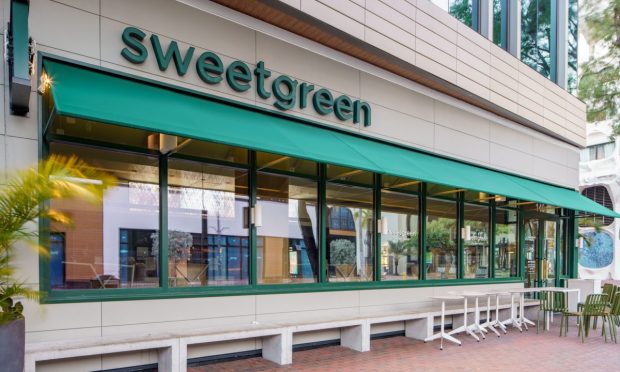
From loyalty rewards redemption to order pickup to mobile downloads, restaurants are using QR codes to accomplish a wide range of their digital goals in their brick-and-mortar stores.
For instance, fast-casual chain Sweetgreen is leveraging the technology to expand its loyalty program to in-store transactions, with the codes linking with consumers’ rewards program accounts, as the restaurant announced Sept. 26.
“With nearly 50% of Sweetgreen customers purchasing in-store, we are excited to offer the best of our rewards across all our owned channels,” the chain’s co-founder and chief brand officer Nathaniel Ru said in a statement. “Starting today, our loyalty program works on all in-store orders, driving unmatched value, customer experience and savings with the simplicity of in-person scanning.”
Meanwhile, quick-service restaurant (QSR) brand Chick-fil-A is using the technology to make its mobile order pickup process more efficient. With the chain extending its mobile drive-thru lanes to reach more than 300 locations by the year’s end, as the restaurant announced last month, it is equipping these lanes with QR codes that consumers scan to receive their orders.
“We want our customers to be in control of their experience,” Julie Ledford, the brand’s service and hospitality team’s principal program lead, said in a statement. “… Providing remarkable service starts with convenience.”
Coffeeshop chain Peet’s Coffee, which has more than 450 locations, has been implementing QR codes to drive mobile orders with in-store customers, according to technology provider Branch, driving loyalty program membership and offer redemption.
These efforts mark an evolution of QR codes’ usage in the restaurant industry beyond just menus and payments, with consumers growing frustrated with such implementations. PYMNTS Intelligence from last year’s study “Digital Divide: Technology, Customer Service and Innovation in the Restaurant Industry,” which drew from a survey of nearly 2,400 U.S. consumers, found that only 34% feel positively about viewing menu with a QR code, though that share jumps to 51% for millennials.
The same report revealed that 29% of restaurants offer QR code menus, though that share jumps to nearly 1 in 3 for chain restaurants and falls to just 21% for independents.
“People are frustrated, especially people 40 years and older,” Michele Baker Benesch, president of Menu Men, a company that designs and manufacturers print and digital menus, said of QR codes in an interview with PYMNTS last year. “Sometimes their phones don’t work. They don’t know how to access the QR code … and that hampers the entire customer experience.”
It would seem that QR code menus have become less common since the period immediately following pandemic lockdowns. Findings from the 2022 edition of PYMNTS’ Restaurant Readiness Index revealed that the share of eateries offering the ability to place orders at the table using a QR code fell 17 points from 42% in September 2021 to 25% in April of the following year.
“QR codes have also been around for a while,” John Park, senior product manager of go to market strategy at Bank of America Merchant Services, told PYMNTS in an interview — since the 1990s — “but these days as we go to restaurants, you really notice the rise.”